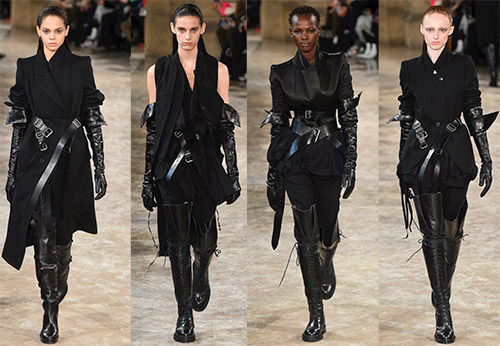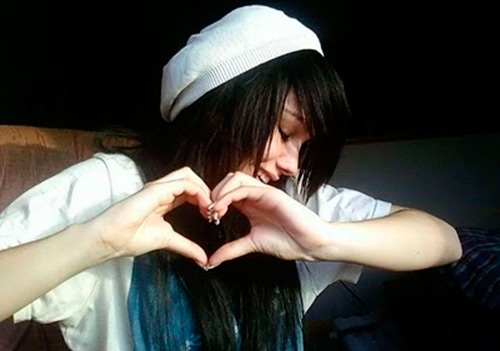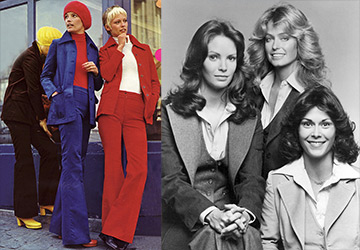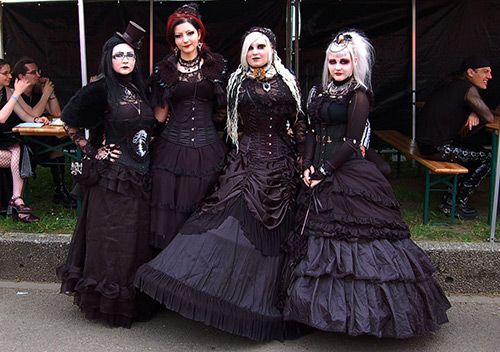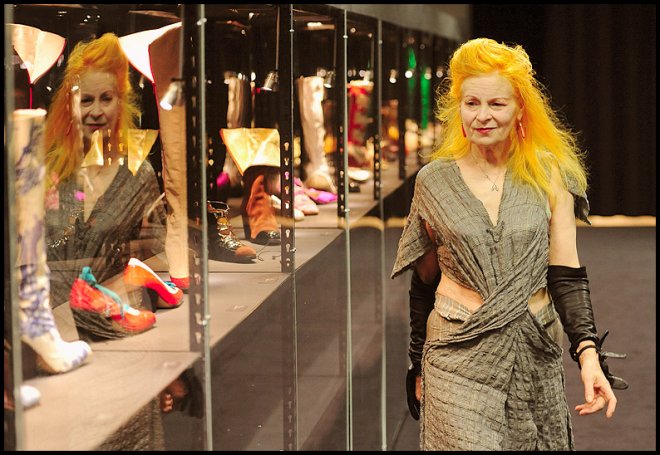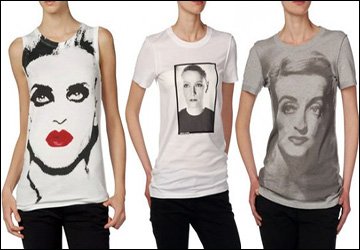Style
History of punk style and punk subculture
"Anarchy", "riot" and "trash heap"
Punks have replaced hippies. And if hippie proclaimed the slogan "Love and Peace", then the punks preferred completely different slogans - "Sex and Violence". The word punk itself means "bad", "trashy", "scum".
The emergence of punks, like many youth subcultures, is directly related to new trends in music. At the origins of punks were two musical groups - the Ramones and the Sex Pistols (deliberately primitive sound, vulgar behavior on stage, "diving" into the crowd of spectators). These groups were the first to play punk rock music.
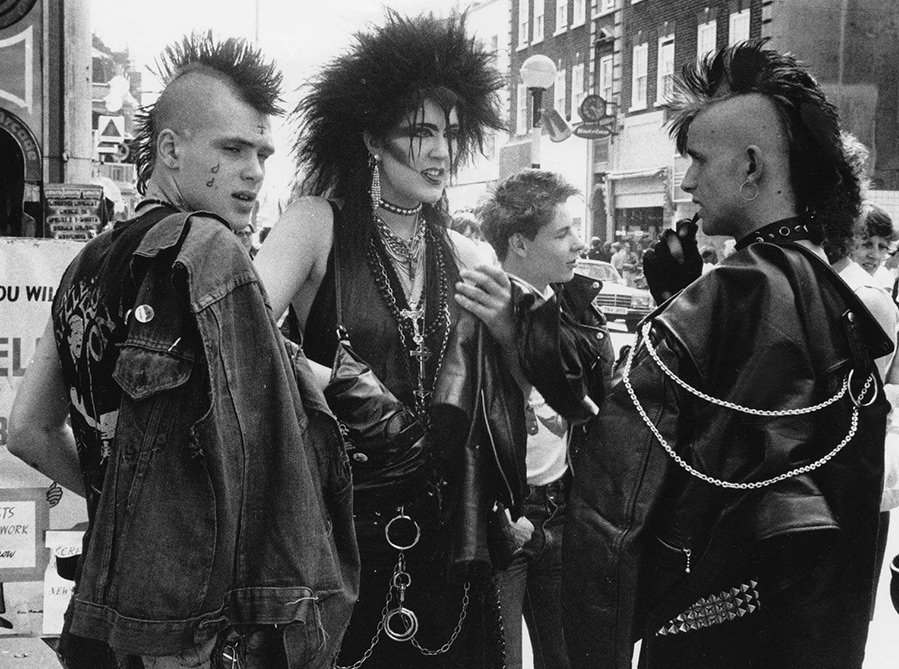
Great Britain is considered the birthplace of punk culture. In the early 1970s, it was in the UK that the scandalous Sex Pistols appeared. Her manager was none other than Malcolm McLaren. By the way, it is he who owns the name of the group.
Malcolm McLaren may well be considered the father of punk culture, but the mother of fashion designer Vivienne Westwood.
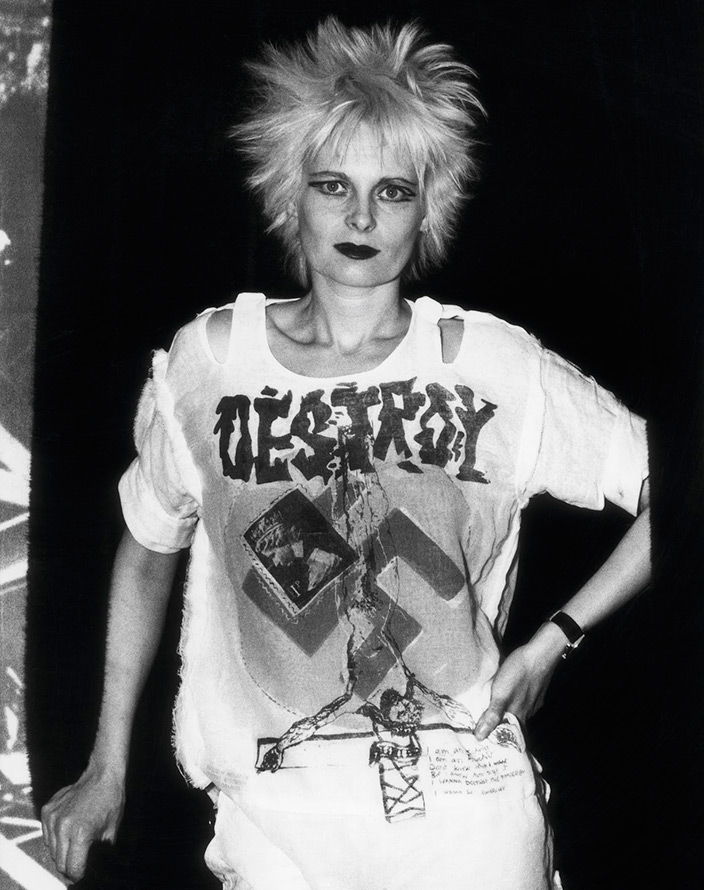
In 1971, Malcolm McLaren and Vivienne westwood jointly opened a fashion boutique in London. The store was originally called "Let it Rock", and then the more scandalous "Sex". It was Vivienne Westwood, who did not have the slightest sewing education, and came up with all the basic elements of clothing and punk style.
Vivienne Westwood is the author of ripped trousers, mohawk hairstyles (she herself began to wear a hedgehog from bleached hair) and T-shirts with defiant inscriptions and prints. The lettering for the T-shirts was designed by Malcolm McLaren. Among the inscriptions on T-shirts sold in the McLaren and Westwood shops were such inscriptions as: "I am not a terrorist, do not arrest me", "Be reasonable - demand the impossible!", "Empty generation", "We are not afraid of ruins!"
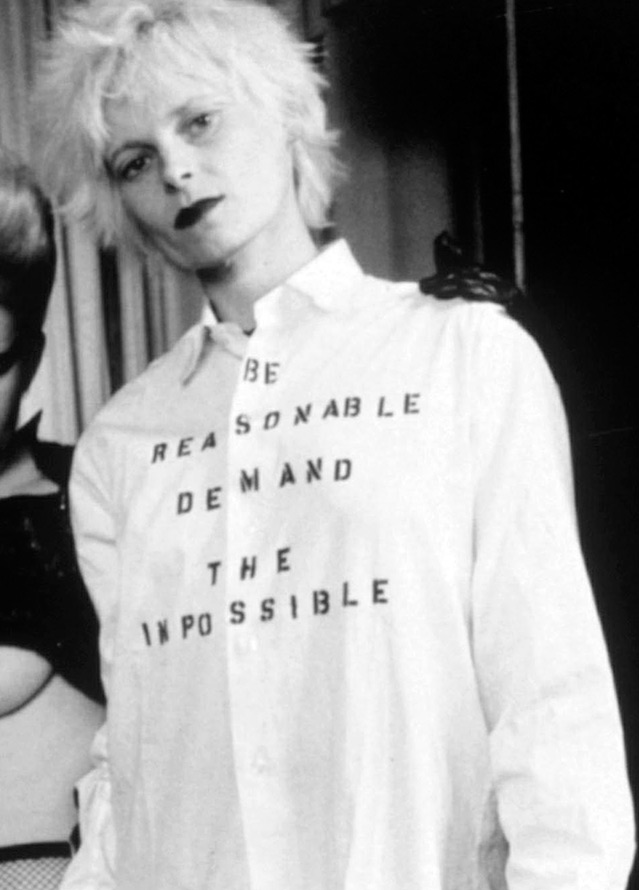
Vivienne Westwood is also the author of the famous T-shirt depicting Elizabeth II, Queen of Great Britain, with a safety pin in the lip.
In the Vivienne Westwood store, you could buy a lot of different clothes and accessories, including outfits and accessories in rivets and spikes, a variety of leather jackets, torn tights, and, of course, the same safety pins that fastened torn pieces of clothing.
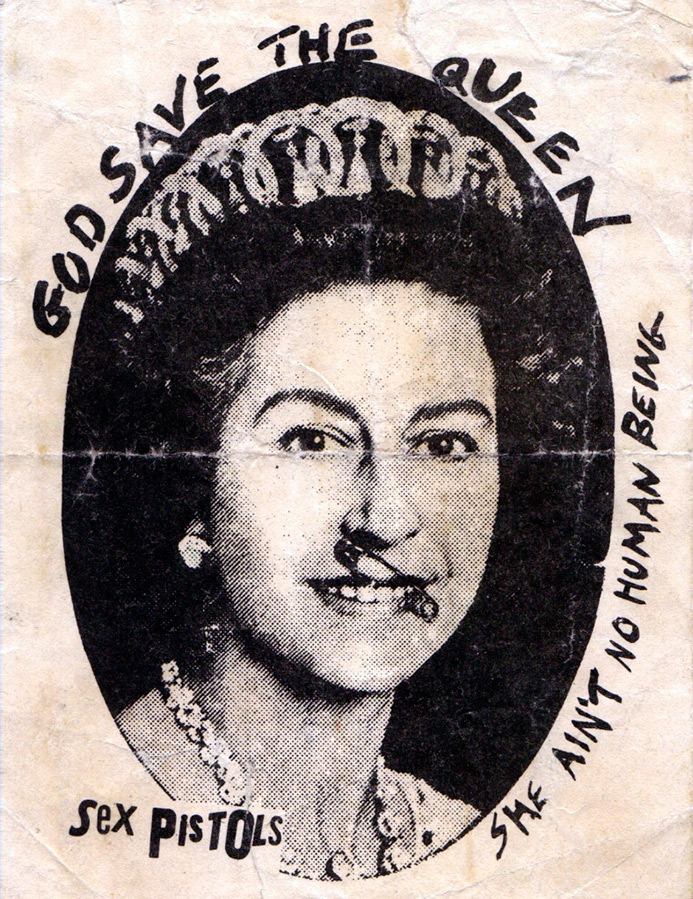
The punk style, which originally existed exclusively as an anti-fashion, was already recognized by the fashion world in the second half of the 1970s, as it usually happens - in 1976, materials about fashion collections in the punk style appeared on the pages of the Italian Vogue.
Punk also has connections with the American "beat generation" of the 1940s and 1950s, at least through the American singer and poet Patti Smith, who is called the "godmother of punk rock". Initially, in her work, she relied on the books of the "beat generation" writers.
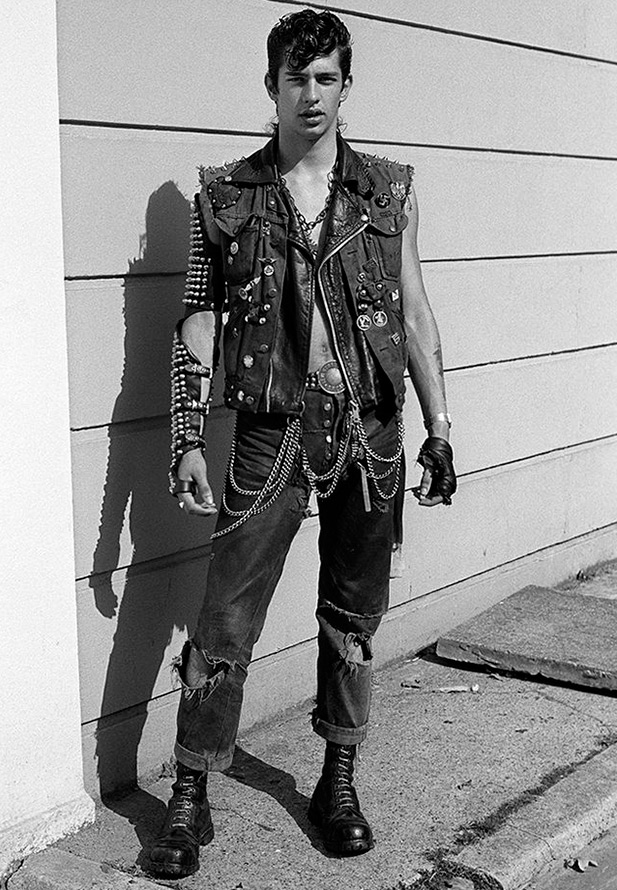
Punk ideology
Punks are quite a diverse subculture, within which there are many trends. That being said, the views of punks themselves can also vary. So, according to their political convictions, representatives of punk culture can be very different. What they have in common is the desire for personal freedom and complete independence, non-conformism, the principles of "not being sold", "relying on oneself." Punks often adhere to nihilism, anarchism, socialism, anti-authoritarianism, anti-capitalism.
Here are some of the punk trends:
Anarcho punk (arises in Great Britain, as the name implies - the main desire for anarchism, correspondingly and attributes in clothes, for example, the use of anarchist symbols)
Folk punk (often have left-wing political views)
Glam punk (The focus is on creating trendy punk looks, hair and makeup)
Hardcore punk ("working class" clothing, sportswear (eg Adidas), short hair (sometimes dreadlocks), leather jackets, motorcycle boots, patronage)
Horror punk (black clothes, cadaveric spots, skeletons, ideological basis - horror films and science fiction)
Pop punk (the topic of relationships, politics, toilet humor, in clothes - leather jackets, Chuck Taylor All-Stars sneakers, baseball caps, ties)
Surf punk (attention to the environment, wearing short shorts and skate shoes).
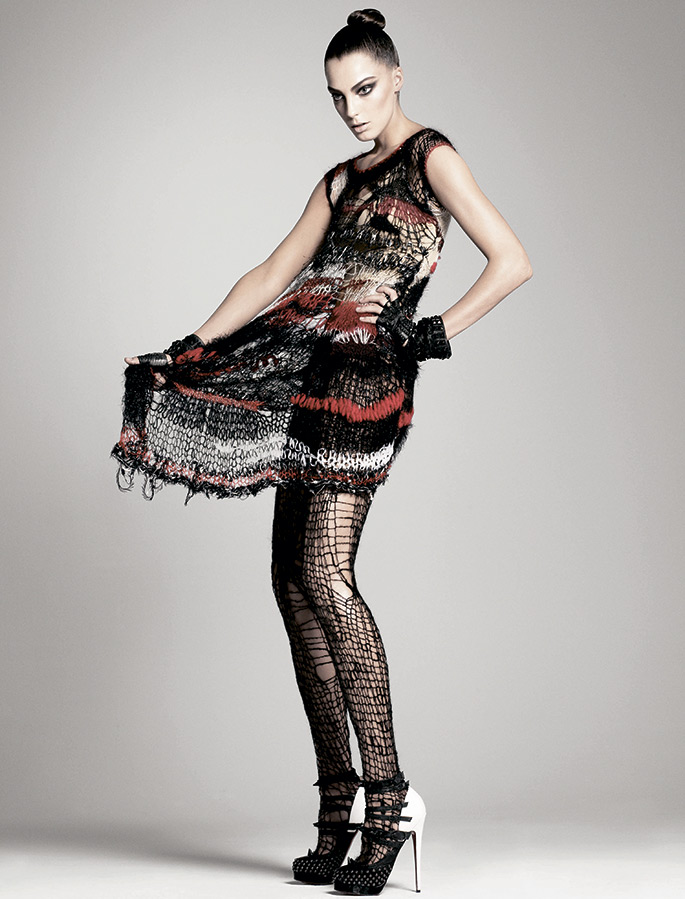
Punk style in fashion
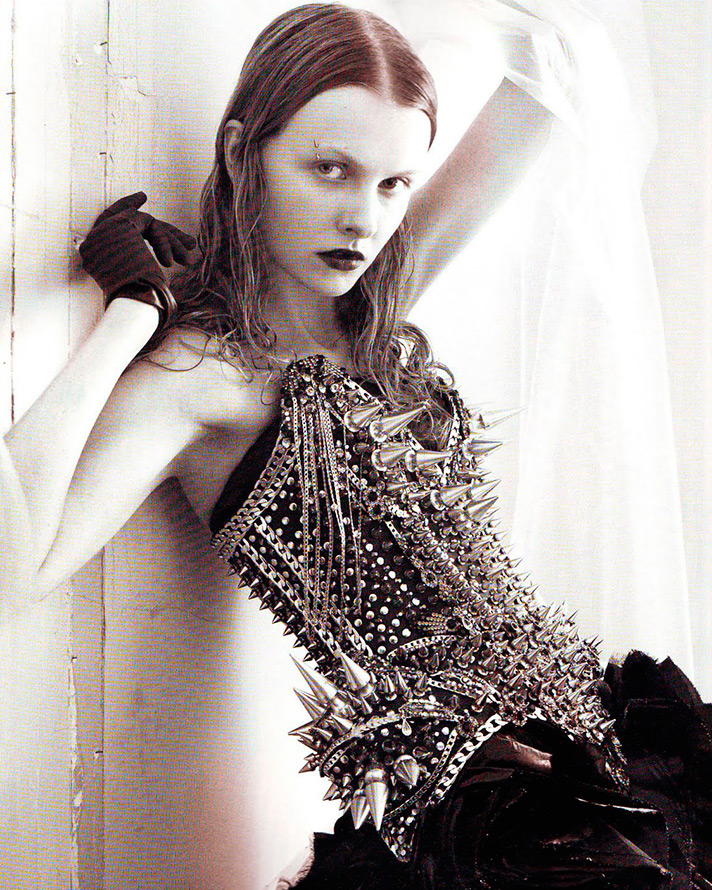
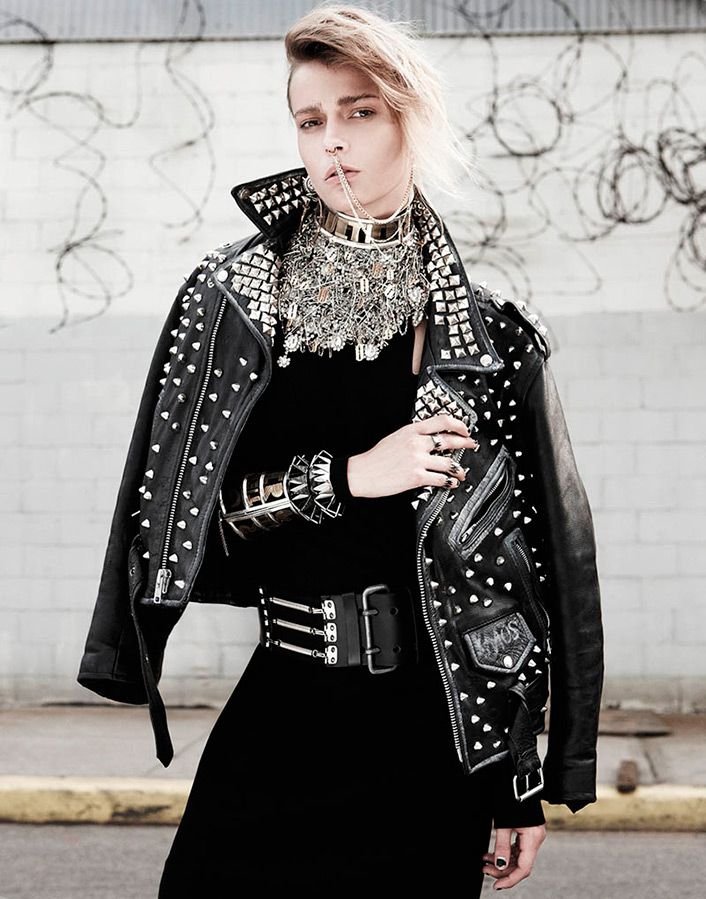
Punk clothing and accessories
Clothing:
leather jackets with rivets, sometimes painted,
ripped or cut jeans, often with patches,
jeans pre-soaked in a bleach solution (jeans with red stains are obtained),
plaid pants,
black t-shirts, torn t-shirts,
black fishnet tights,
footwear - massive army boots with thick soles with lacing (bastards), short heavy boots (banks) or sneakers.
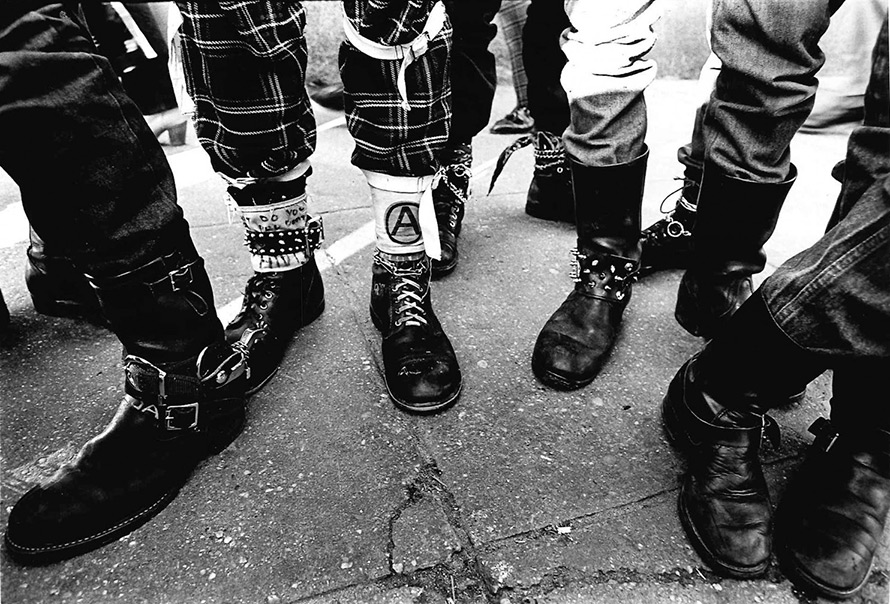
Punk Jewelry & Accessories
Chains in various weaves and sizes
set of pins and badges,
spiked wristbands,
belt with a skull patch or with crosses,
anarchist signs,
earrings in ears, noses and so on,
besides wearable jewelry, punks make tattoos with meaning, and sometimes without much meaning.
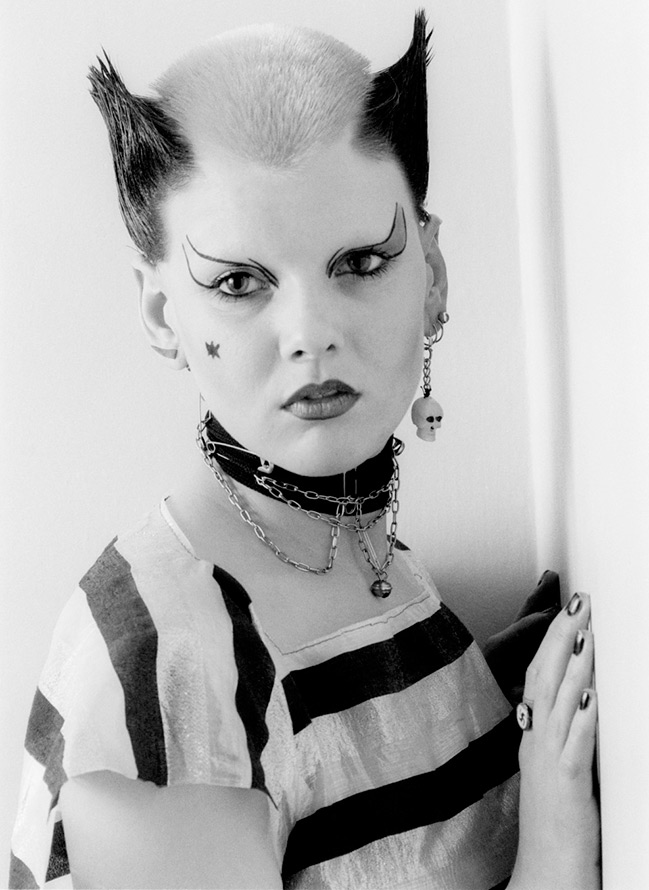
Punk hairstyles
Multi-colored mohawks (a hairstyle borrowed from the culture of the Indians, this hairstyle is also called the Mohawk) - the brighter and more unnatural the color and dirtier the hair, the better; for protruding mohawks, varnish, gel or beer are used.
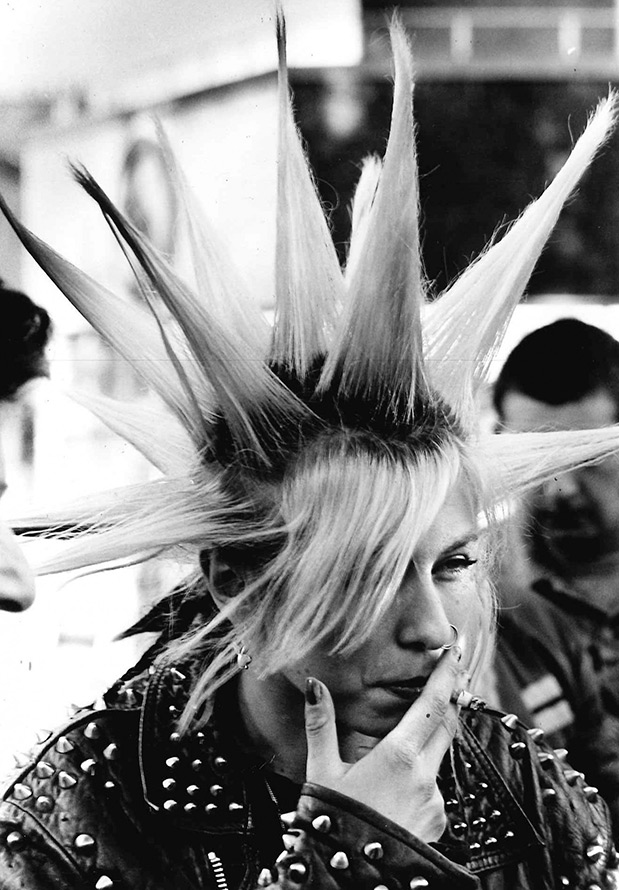
Types of Iroquois:
Mamochkin - the hair is not shaved, the mohawk is placed directly, with ordinary varnish.
Classic - a strip of hair of average length about 15 cm and a width of 5-7 cm, extending evenly from the forehead to the back of the head, all other hairs shaved off.
Spiked - equal tufts of hair are curled into spikes rather than lifted up in a solid comb.
Ax (ax) is a medium-wide mohawk that ends at the crown of the head, not the back of the head.
Anti - in the place where the mohawk should be, he is not, his hair is shaved bald. But on the right and left, from the bald head, two mohawks are made.
Iguana - this hairstyle looks like a double mohawk, starting from the middle of the head and with a very wide parting in the middle, this hairstyle is somewhat reminiscent of a lizard.
Transverse - a strip of hair goes from ear to ear.
Combo - these are various combinations of the two most popular types of punk hairstyles - mohawk and spikes.
Checkers - is a checkered haircut on short hair, where empty checkers are shaved to zero.
They use punks and a kind of makeup - the eyes are brought in with a black pencil, and mascara is applied in a thick layer.

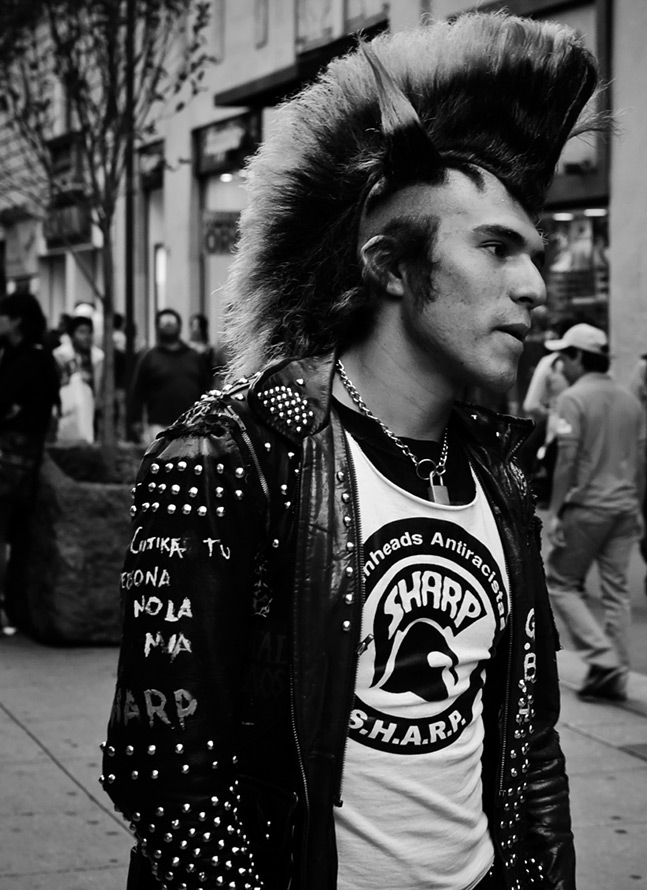
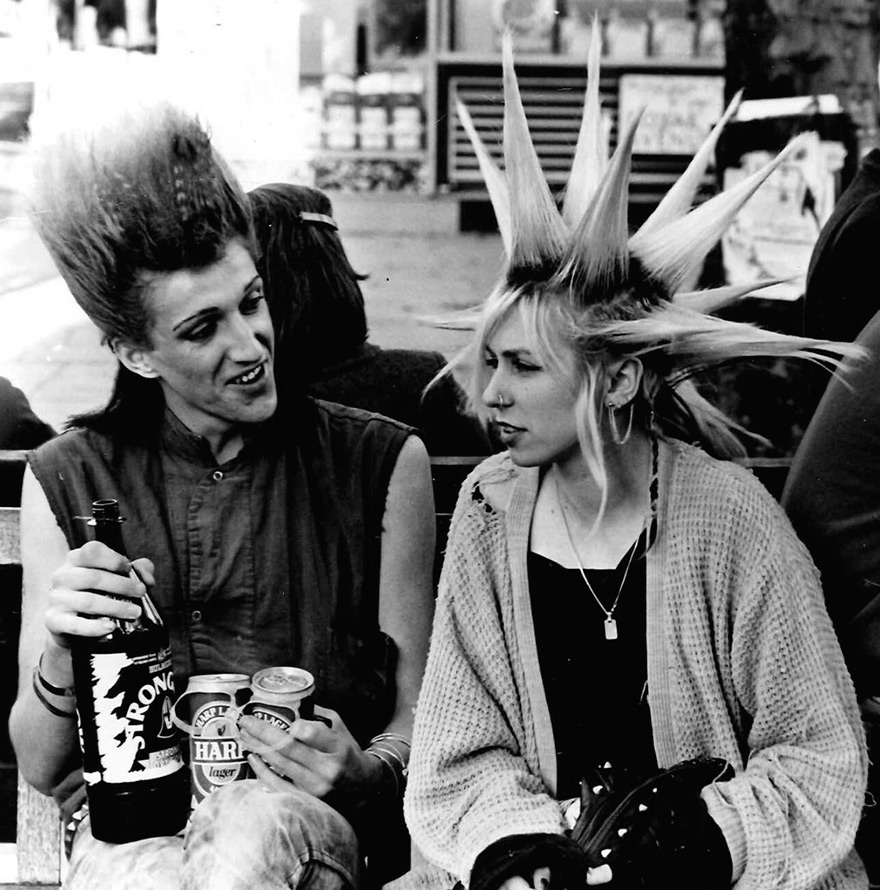
Comments and Reviews
Add a comment
Rating news
Shades of clothing that make women look younger
What shades of hair make women younger: rules and photos
Funny wedding dresses - photos and ideas
12 most expensive down jackets for the winter
How to look 25 at 40: tips from supermodels
Beautiful schoolgirls
Anti-aging haircuts and hairstyles for women
Fashionable skirts for autumn and winter
Fashionable women's trousers for the cold season
Fashionable and stylish sandals for summer 2024
Spring-summer 2024
 Fashionable dresses and tops with thin spaghetti straps
Fashionable dresses and tops with thin spaghetti straps
 Bandana tops: how to wear stylishly and beautifully
Bandana tops: how to wear stylishly and beautifully
 How to put together the perfect men's wardrobe for the summer
How to put together the perfect men's wardrobe for the summer
 Trendy shorts for spring-summer 2024
Trendy shorts for spring-summer 2024
 Fashionable skirts for spring-summer 2024: a guide to online shopping
Fashionable skirts for spring-summer 2024: a guide to online shopping
 The most fashionable dresses spring-summer 2024: styles and colors
The most fashionable dresses spring-summer 2024: styles and colors
 Fashionable total look 2024: image ideas and trends
Fashionable total look 2024: image ideas and trends
